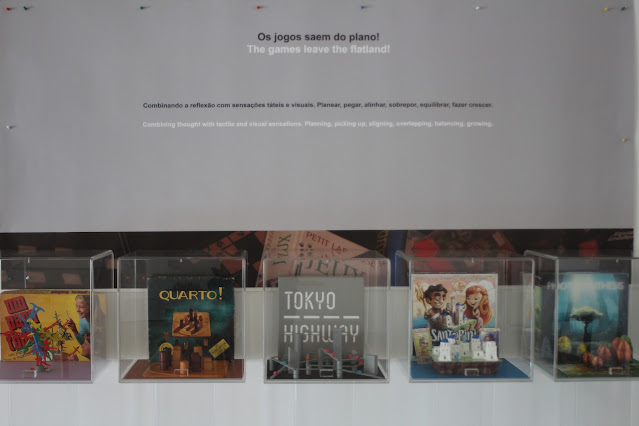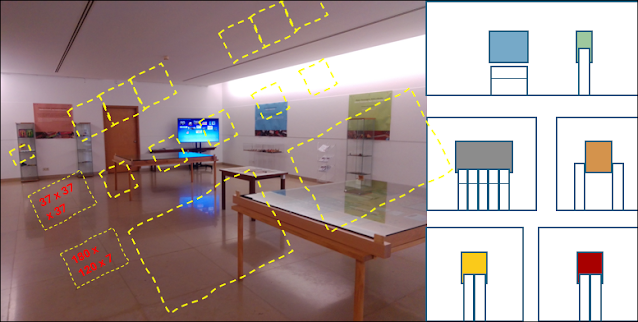Game boards and cardboard pieces are common components of many games, evoking the flats of a life in two dimensions. But it does not have to be that way. Neither in games that use boards as an essential part, nor in those that are played on a table but without a board. Examples abound, spanning decades.
Um para todos. One for everyone. A game that already featured in the blog. A matter of balance, always in a critical condition. Choosing between safer or riskier positions. Trying to condition your opponents' choices. And, when disaster strikes, picking up all the fallen clowns. Created in the early 1970s by Theo and Ora Coster, founders of Theora Design, Israel.
Quarto. One of the many derivations of Tic-Tac-Toe. Quarto because the line-up consists of four elements. But with many layers, since each piece has four attributes: light or dark colour, short or tall, with circular or quadrangular base, hollow or full. With an added detail: you are the one who chooses the piece your opponent will place! A game by Blaise Muller (1991).
Tokyo Highway. The game that aroused the most curiosity in visitors, no doubt about that! An installation of sober shapes and colours, punctuated by colourful small cars. How is this played, people asked? It is a mixture of strategy and dexterity. Building your own road, with segments of the same same size and never flat. Building pillars so that you can build overpasses and underpasses, crossing the roads that have already been laid out. Avoiding obstacles. By Naotaka Shimamoto and Yoshiaki Tomioka (2018).
Santorini. In shades of white and blue, the eye-catching image of the Greek island bearing the name, borrowed by this boardgame. The island takes shape as the buildings are erected. First, we move one of our builders. Then, we place a floor of a house, building one floor at a time, to be topped with a blue dome. The aim: to be the first to reach the top. With the possibility of playing the role of mythological figures, each with their own power. An invention by Gord! (2016).
Photosynthesis. A game of light and shadows, literally. With the Sun rotating around the board, the trees growing, releasing their seeds, and casting shadows, which prevent other trees from growing. A constant struggle, anticipating the next Sun rotation, attempting to secure space, aiming to make the trees grow, and then cutting them down. Find out more, here. A dream by Hjalmar Hach (2017) with the art of Sabrina Miramon.








